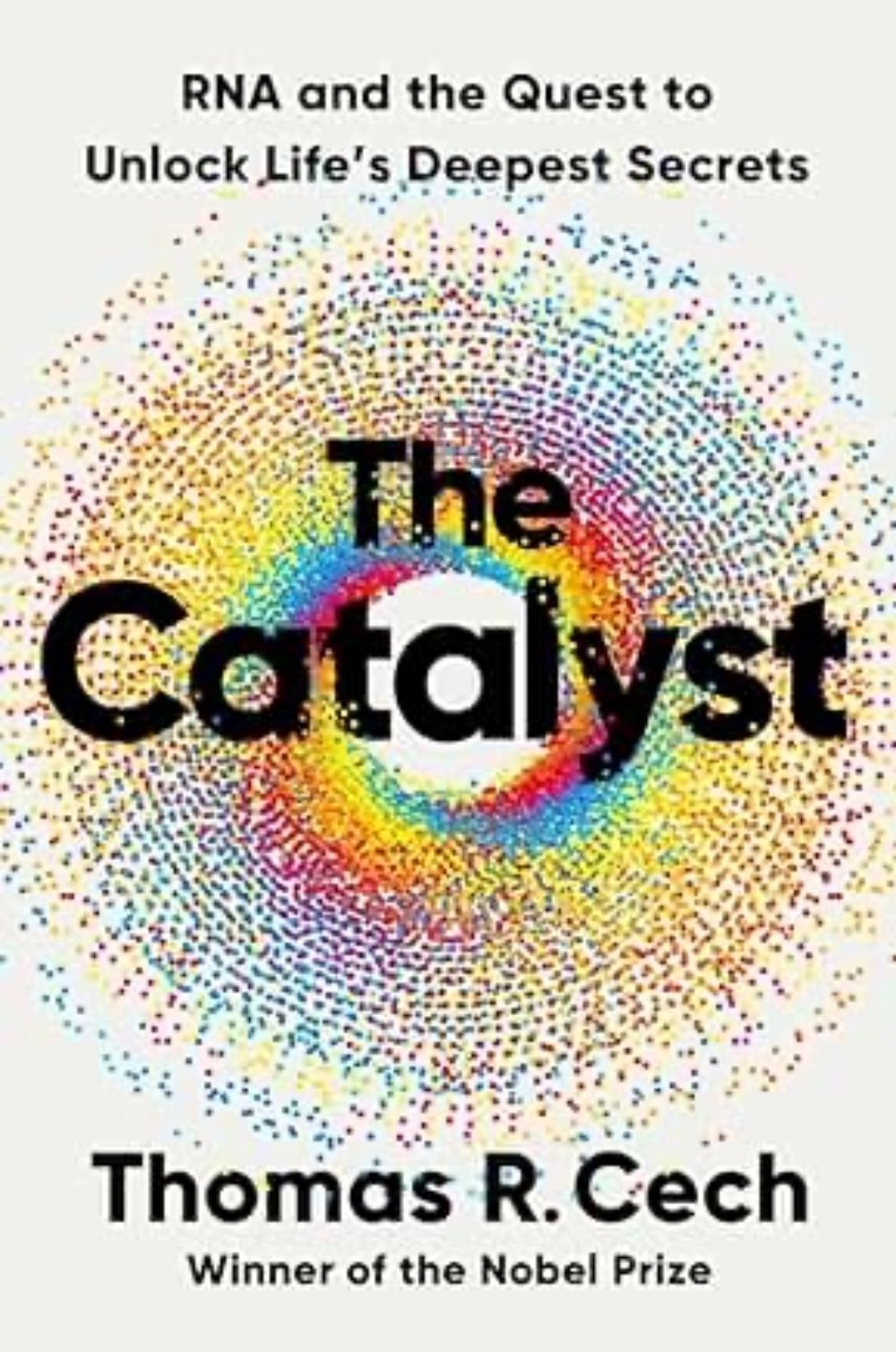The Catalyst by Thomas R. Cech
The Catalyst | RNA and the Quest to Unlock Life’s Deepest Secrets by Thomas R. Cech unveils the groundbreaking discoveries of the past decades, positioning RNA as the pivotal player in biology’s fundamental questions, spanning the origins of life, human nature, aging, and the transformative potential of cutting-edge therapies like CRISPR and mRNA vaccines.
A Nobel Prize–winning scientist reveals biology’s most transformative achievements in decades—a Double Helix for the dawning of the RNA age.
Over the last half century, a quiet revolution has taken place. In a series of breathtaking discoveries, biochemist Thomas Cech and a diverse cast of brilliant scientists have revealed RNA at the center of biology’s greatest mysteries, from how life began to what makes us human to why we age. At last, The Catalyst pulls back the curtain to show how RNA—long sidelined as the passive servant of DNA—defines life, from its very origins to our future in the twenty-first century. Recounting his own paradigm-shifting discovery that RNA can catalyze biochemical reactions, as well as his work on the “fountain of youth” telomerase, Cech unfolds how RNA holds the key to the intricate machinery of our cells, the critical processes of aging and disease, and the spectacular powers of breakthrough therapies from CRISPR to mRNA vaccines. From one of our foremost scientists, The Catalyst is a must-read guide to the present and future of biology and medicine.
Thomas R. Cech, is a distinguished professor of biochemistry at the University of Colorado Boulder and a research scientist of the Howard Hughes Medical Institute. His many honors include the Nobel Prize and the National Medal of Science. He lives in Boulder, Colorado.
- ISBN: 1324050683
- ISBN-13: 978-1324050681
- 320 pages
- Published | June 4, 2024
- Paperback Edition | June 3, 2025
Published by: W.W. Norton & Company, Inc.
Reviews
‘The Catalyst’ Review: The RNA Renaissance
June 5, 2024 | by Adrian Woolfson
Once dismissed as a molecule of minor importance, RNA now appears to be the apotheosis of everything essential to life.
Initially dismissed as a wealthy and frivolous socialite, Charles Swann in Marcel Proust’s “In Search of Lost Time” eventually transforms from a minor figure to an important one. Were biology a novel, ribonucleic acid (RNA) would be the Charles Swann of living systems.
For decades, the biological sciences barely acknowledged the existence of RNA, consigning it to relative obscurity. Researchers accepted that it performed some important functions—messenger RNA, for instance, carries genetic information from the nucleus to the cell cytoplasm, while transfer RNA transports amino acids to the ribosomes that assemble them into proteins—but it was not considered to be of general importance beyond these discreet cameo roles.
“Cech debuts with an entrancing primer on the vast capabilities of RNA… The biological discussions are remarkably lucid, thanks to easy-to-understand analogies… [The Catalyst] fascinates.” — Publishers Weekly, starred review
Nobel Prize–winning biochemist Cech debuts with an entrancing primer on “the vast capabilities of RNA.” Recounting how his research in the early 1980s upended the long-held belief that RNA was a simple molecule that intermediated between DNA and proteins, Cech describes discovering that RNA can catalyze biochemical reactions and perform jobs previously thought to be the exclusive purview of enzymes, such as orchestrating the construction of proteins. The author also delves into subsequent breakthroughs, telling how in the late ’80s molecular biologist Carol Greider determined that RNA build out “chromosome ends to secure the integrity of the genome.”
The Long-Overlooked Molecule That Will Define a Generation of Science
From E=mc² to splitting the atom to the invention of the transistor, the first half of the 20th century was dominated by breakthroughs in physics. Then, in the early 1950s, biology began to nudge physics out of the scientific spotlight — and when I say “biology,” what I really mean is DNA. The momentous discovery of the DNA double helix in 1953 more or less ushered in a new era in science that culminated in the Human Genome Project, completed in 2003, which decoded all of our DNA into a biological blueprint of humankind.








